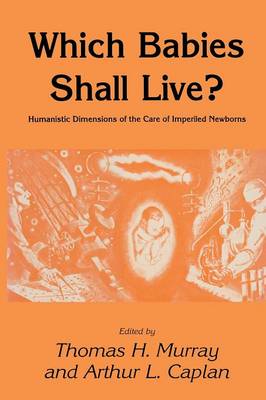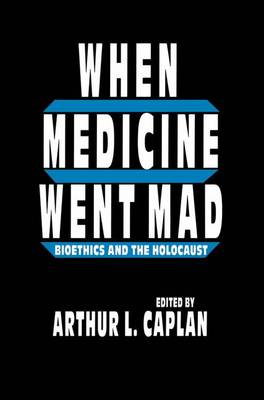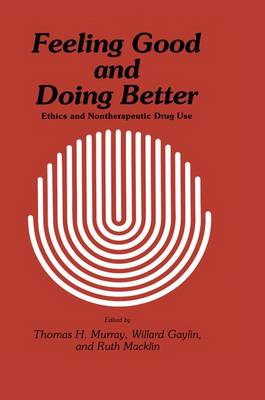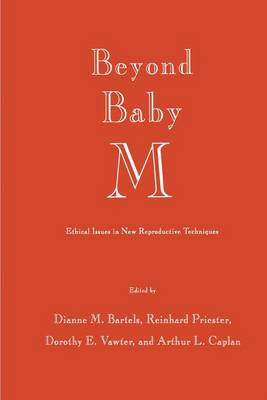Contemporary Issues in Biomedicine, Ethics, and Society
4 total works
The fate of seriously ill newborns has captured the atten tion of the public, of national and state legislators, and of powerful interest groups. For the most part, the debate has been cast in the narrowest possible terms: "discrimination against the handicapped"; "physician authority"; "family autonomy." We believe that something much more profound is happening: the debate over the care of sick and dying babies appears to be both a manifestation of great changes in our feelings about infants, children, and families, and a reflection of deep and abiding attitudes toward the newborn, the handi capped, and perhaps other humans who are "less than" nor mal, rational adults. How could we cast some light on those feelings and attitudes that seemed to determine silently the course of the public debate? We chose to enlist the humanities-the dis players and critics of our cultural forms. Rather than closing down the public discussion, we wanted to open it up, to illuminate it with the light of history, religion, philosophy, literature, jurisprudence, and humanistically oriented sociol ogy. This book is a first effort to place the hotly contested Baby Doe debate into a broader cultural context.
In When Medicine Went Mad, one of the nation's leading bioethicists-and an extraordinary panel of experts and concentration camp survivors-examine problems first raised by Nazi medical experimentation that remain difficult and relevant even today. The importance of these issues to contemporary bioethical disputes-particularly in the thorny areas of medical genetics, human experimentation, and euthanasia-are explored in detail and with sensitivity.
Feeling Good and Doing Better
by Thomas H. Murray, Willard Gaylin, and Ruth Macklin
Published 4 October 2011
The place of drugs in American society is a problem more apt to evoke diatribe than dialog. With the support of the Na tional Science Foundation's program on Ethics and Values in Science and Technology, and the National Endowment for the Humanities' program on Science, Technology, and Human Values, * The Hastings Center was able to sponsor such dialog as part of a major research into the ethics of drug use that spanned two years. We assembled a Research Group from leaders in the scientific, medical, legal, and policy com munities, leavened with experts in applied ethics, and brought them together several times a year to discuss the moral, legal and social issues posed by nontherapeutic drug use. At times we also called on other experts when we needed certain issues clarified. We did not try to reach a consensus, yet several broad areas of agreement emerged: That our society's response to nontherapeutic drug use has been irrational and inconsistent; that our attempts at control have been clumsy and ill-informed; that many complex moral values are entwined in the debate and cannot be reduced to a simple conflict between individual liberty and state paternalism. Of course each paper should be read as the statement of that particular author or authors. The views expressed in this book do not necessarily represent the views of The Hastings Center, the National Science Foundation, or the National En dowment for the Humanities.
Beyond Baby M
by Dianne M. Bartels, Reinhard Priester, Dorothy E. Vawter, and Arthur L. Caplan
Published 20 May 2013
Arthur L. Caplan It is commonly said, especially when the subject is assisted reproduction, that medical technology has out stripped our morality. Yet, as the essays in this volume make clear, that is not an accurate assessment of the situ ation. Medical technology has not overwhelmed our moral ity. It would be more accurate to say that our society has not yet achieved consensus about the complex ethical iss ues that arise when medicine tries to assist those who seek its services in order to reproduce. Nevertheless, there is no shortage of ethical opinion about what we ought to do with respect to the use of surrogate mothers, in vitro fertil ization, embryo transfer, artificial insemination, or fertil ity drugs. Nor is it entirely accurate to describe assisted repro duction as technology. The term "technology" carries with it connotations of machines buzzing and technicians scurrying about trying to control a vast array of equip ment. Yet, most of the methods used to assist reproduc tion that are discussed in this volume do not involve exotic technologies or complicated hardware. It is technique, more than technology, that dominates the field of assisted reproduction. Efforts to help the infertile by means of the manipu lation of human reproductive materials and organs date 1 2 Caplan back at least to Biblical times. Human beings have en gaged in all manner of sexual practices and manipulations in attempts to achieve reproduction when nature has balked at allowing life to begin.



